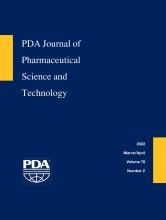Abstract
In cleanroom facilities, both disposable and reusable textile garments (coveralls, boots, hoods, and frocks) meet the particulate standards from the most rigorous to the most basic levels. However, the reusables clearly offer two other important benefits, lower annual cost and lower environmental impact. The objectives of this article are to now provide quantitative reusable product benefits on a U.S. national environmental and economic basis. This is the first quantitative, novel multi-user economic evaluation of selecting cleanroom reusables over disposables. For personal protection equipment (PPE), these cost and environmental benefits indicate there is also an improved environmental and economic aspect to the increased national demand for reusables related to coronavirus disease 2019 (COVID-19), while necessary cleaning with approved detergents is easily achieved. The current reusable cleanroom market (14.1 million packages) was estimated to be 60% nonsterile and 40% sterilized. The total market is about 50% reusable and 50% disposable. This research documents that there is an annual cost reduction of about 58% when selecting reusables over disposables, giving an economic savings to the U.S. cleanroom sector from reusables of about $1.2 billion in the next decade. This is also saving the total U.S. about 136 million MJ natural resource energy/year (38 million kWh) and about 8.4 million kg CO2eq annually (removal of about 1,650 cars/year). A maximum hypothetical case for reusables at 87.5% of the market (12.5% are mandatory Hazmat disposable) would yield a U.S. national savings of nearly $2.1 billion/decade to the cleanroom sector bottom line, as well as 2.4 billion MJ nre savings in energy or removal of about 29,000 cars/decade. These results indicate there are effective, verifiable, and easily obtained environmental and economic benefits by the basic transition by diverse cleanrooms in deciding to select reusable garments.
- © PDA, Inc. 2022
PDA members receive access to all articles published in the current year and previous volume year. Institutional subscribers received access to all content. Log in below to receive access to this article if you are either of these.
If you are neither or you are a PDA member trying to access an article outside of your membership license, then you must purchase access to this article (below). If you do not have a username or password for JPST, you will be required to create an account prior to purchasing.
Full issue PDFs are for PDA members only.
Note to pda.org users
The PDA and PDA bookstore websites (www.pda.org and www.pda.org/bookstore) are separate websites from the PDA JPST website. When you first join PDA, your initial UserID and Password are sent to HighWirePress to create your PDA JPST account. Subsequent UserrID and Password changes required at the PDA websites will not pass on to PDA JPST and vice versa. If you forget your PDA JPST UserID and/or Password, you can request help to retrieve UserID and reset Password below.






